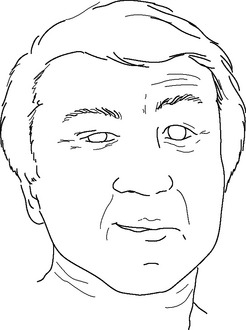 OBSERVATION OF BODY MOVEMENTS
OBSERVATION OF BODY MOVEMENTS
HEAD
Tremor of the head
Observation, Chapter 5; Symptoms and Signs, Chapter 55
Rigidity of the neck
Clinical significance
In acute situations, rigidity of the neck may indicate an invasion of external Wind, in which case it will be accompanied by all the typical manifestations of an exterior invasion such as aversion to cold, fever, headache and a Floating pulse. Both Wind-Cold and Wind-Heat may cause rigidity of the neck but it is more likely to occur with an invasion of Wind-Cold (in fact, it is one of the chief symptoms of invasion of Wind-Cold as listed in the ‘Discussion of Cold-induced Diseases’ – see Bibliography, p. 1067). Another possible acute condition causing stiffness of the neck occurs when external Cold and Dampness invade the muscles of the neck, in which case there is also pronounced neck pain; this is a case of acute Painful Obstruction Syndrome and it is relatively common.
Box 4.1 summarizes patterns underlying neck rigidity.
FACE
Deviation of eye and mouth
Observation, Chapter 5; Symptoms and Signs, Chapter 55
Clinical significance
When deviation of eyes and mouth follows a stroke, it is called central facial paralysis in Western medicine, as it arises from the central nervous system. In facial paralysis following Wind-stroke, the nerves above the eyes are not affected, that is, the movement of the eyebrows and furrowing of the forehead are normal. By contrast, in peripheral facial paralysis (Bell’s palsy), the patient will be unable to raise the eyebrow or furrow the forehead on the paralysed side. Figure 4.1 shows the deviation of eye and mouth.

Fig. 4.1 Deviation of eye and mouth
Facial paralysis (Bell’s palsy)
LIMBS AND BODY
The limb and body signs discussed are:
Paralysis
Observation, Chapters 18 and 19; Symptoms and Signs, Chapter 68
Paralysis is called Tan Huan in Chinese, which can be written with two different sets of characters, the second one of which means ‘spread out’ and ‘relaxed’ (see Glossary, p. 1061).
Clinical significance
Paralysis may be due to many different patterns depending on the severity of the disease.
Generally speaking, in the beginning stages of paralysis there may be invasion of external Dampness occurring against a background of Deficiency.
Box 4.3 summarizes patterns underlying paralysis.
Multiple sclerosis
Multiple sclerosis is an example of paralysis that is commonly seen in Western, industrialized countries and one can identify clearly the above patterns in its pathological development. There are four stages in the pathological progression of multiple sclerosis (Box 4.4). The very beginning stage is characterized by invasion of external Dampness and the symptoms are purely numbness and tingling. The second stage is characterized by deficiency of the Stomach and Spleen and at this stage the patient begins to experience difficulty in walking. The third stage is characterized by deficiency of Liver and Kidneys, which fail to nourish the sinews and bones, and the patient experiences severe difficulty in walking and urinary incontinence deriving from the Kidney deficiency. The fourth stage is characterized by the development of pathogenic factors, which may be internal Wind, itself deriving from the Liver and Kidney deficiency and causing spasticity of the limbs, or Blood stasis causing pain in the limbs.
Tremor or spasticity of the limbs
Observation, Chapters 14 and 18; Interrogation, Chapter 39; Symptoms and Signs, Chapters 64 and 66
Twitching of the muscles
Symptoms and Signs, Chapter 68
Clinical significance
In Yang deficiency, twitching of the muscles is due to the Defensive Qi (which is Yang in nature) not nourishing the superficial muscles. Chapter 3 of the ‘Simple Questions’ says: ‘The refined part of Yang-Qi nourishes the Mind while the soft part nourishes the sinews.’1
Box 4.6 summarizes patterns underlying twitching of the muscles.
Opisthotonos
Contraction of the limbs
Observation, Chapter 18; Symptoms and Signs, Chapter 64
Clinical significance
Contraction of the limbs may occur in various diseases such as arthritis, convulsions or Wind-stroke. The patterns causing it are usually general deficiency of Qi and Blood, internal Wind, Cold, Dampness, Phlegm or Blood stasis; in most cases the Liver and Kidney organs are particularly involved because they nourish sinews and bones.
Box 4.7 summarizes patterns underlying contraction of the limbs.
Tremor of the hands
Observation, Chapter 14; Symptoms and Signs, Chapter 65


 ). People’s Health Publishing House: Beijing, 1979:17 First published c. 100
). People’s Health Publishing House: Beijing, 1979:17 First published c. 100

